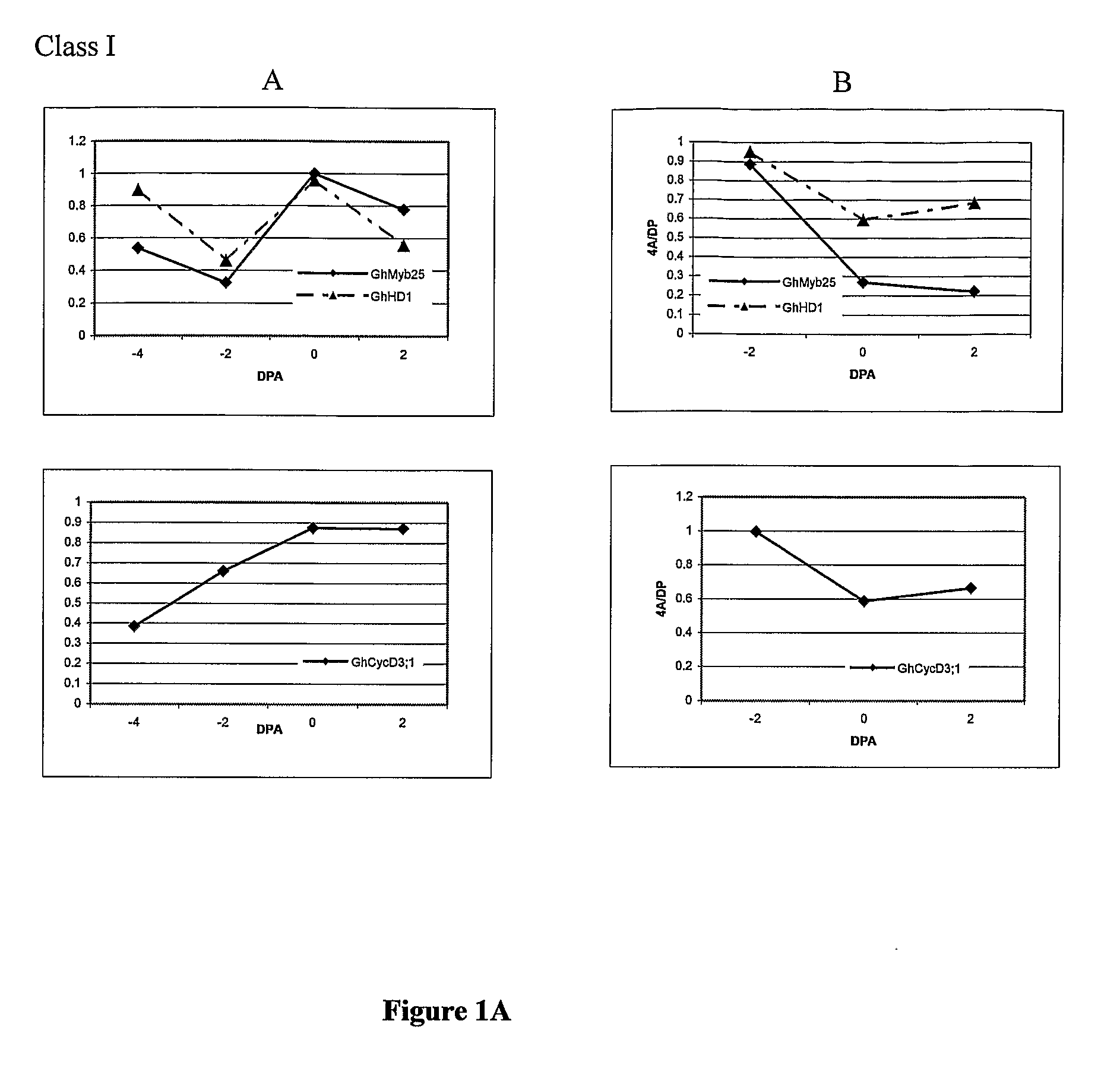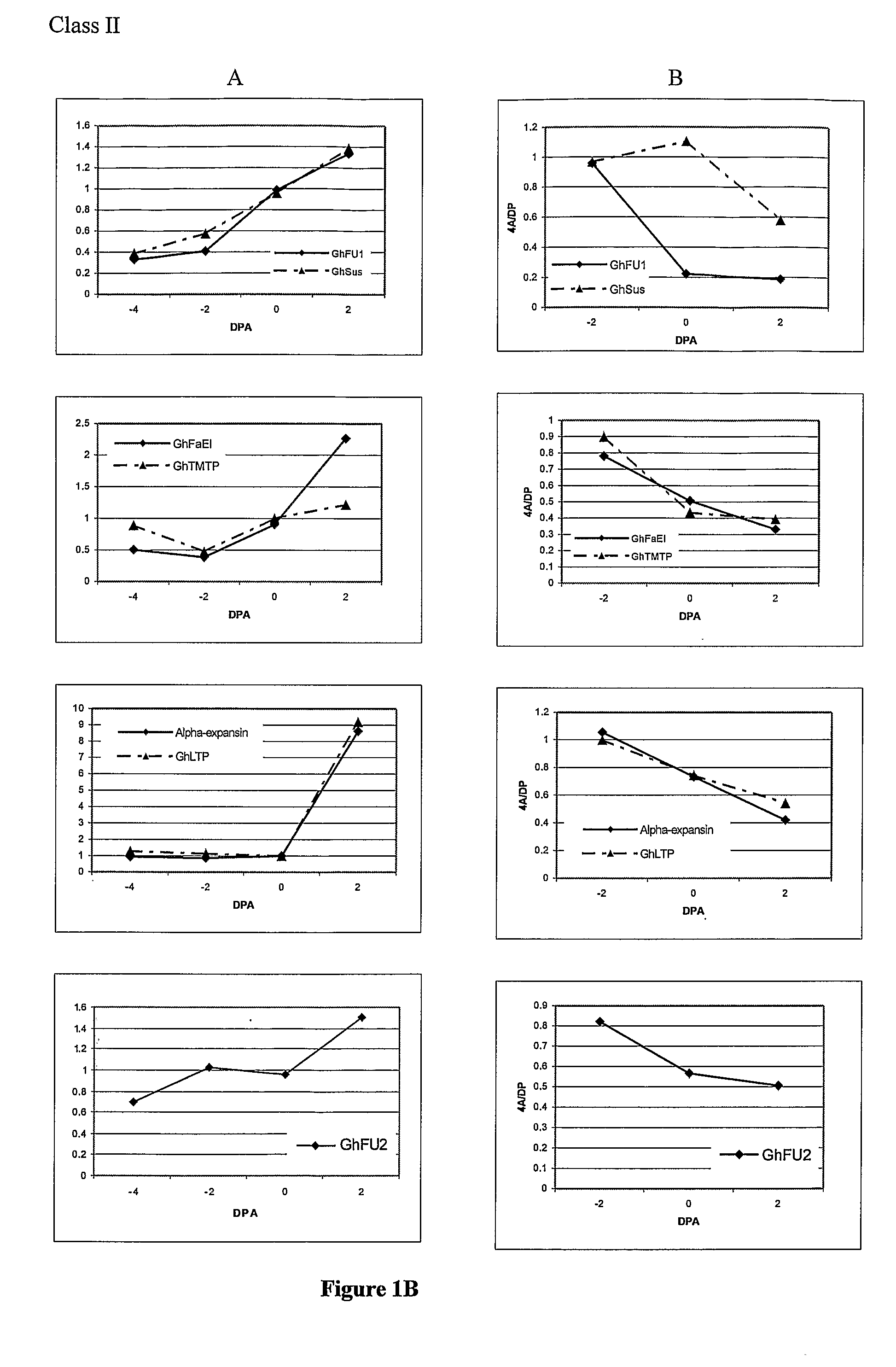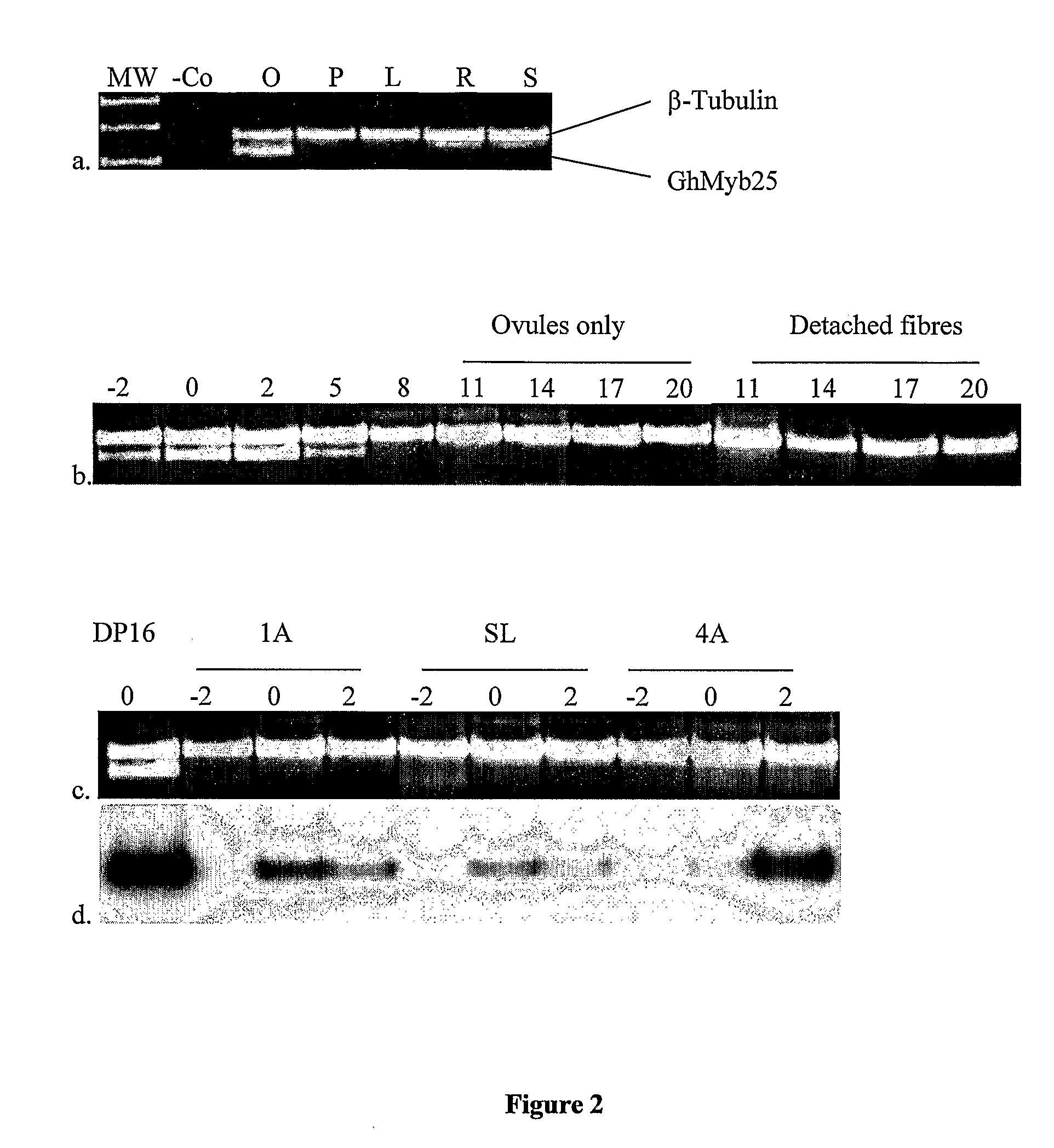Genes involved in plant fibre development
a technology of plant fibres and genes, applied in the field of polypeptides and polynucleotides, to achieve the effect of enhancing the stability of a polypeptid
- Summary
- Abstract
- Description
- Claims
- Application Information
AI Technical Summary
Benefits of technology
Problems solved by technology
Method used
Image
Examples
example 1
Comparison of Fibre Initials Development in Wild-Type and Lintless Mutants of Cotton
[0341]To identify genes that were specific to fibre initiation, genes were identified that were differentially expressed in early stage fertilised ovules of wild-type and lintless mutants of cotton that produce little if any fibres. The cotton lines (Gossypium hirsutum L.) used included two wild type cotton lines: Deltapine 16 (DP16) and Xu-142, and 6 lintless lines: Lintless 1A, Lintless 4A, Lintless 5B, Lintless 53, SL1-7-1 and fl. The 1A, 4A, 5B, 53 lines were obtained from the Queensland Department of Primary Industry Tropical Crops and Pastures Germplasm Collection and were originally selections from a linted cultivar B1278 isolated by Dr Alistair Low (unpublished, CSIRO Irrigation Research, Griffith, NSW). SL1-7-1 was obtained from USDA-ARS (College Station, Tex., USA). The Fuzzless-lintless, fl, isolated from Xu-142 background, and Xu-142 were provided by Prof. Xiao-Ya Chen (Institute of Plant...
example 2
Differential Expression of Genes in the Mutant Ovules Compared to Wild-Type
cDNA Library Construction
[0344]CHX cDNA library was constructed using cycloheximide treated ovules. Cotton flower buds of developmental stages of −3 dpa, −2 dpa, −1 dpa and 0 dpa were detached and pooled from glasshouse grown cotton plants and surface sterilized by dipping in 70% ethanol and flaming twice. The cotton ovules were dissected out under sterile conditions and cultured on 15 ml of cotton ovule culture medium (Beasley and Ting, 1973) supplemented with 5 μM IAA (indole acetic acid) and 1 μM GA in 100 ml glass flasks at 29° C. in the dark overnight and then treated with 10 μM cycloheximide for 4 hours under the same culture conditions. After the cycloheximide treatment, the ovules were rinsed with sterile water, stored in RNAlater solution (Ambion) at −20° C. Total RNA was isolated using a method described by Wu et al. (2002). Purification of poly A+ mRNA from total RNA was carried out using Qiagen Ol...
example 3
Identification of Genes that are Differentially Expressed in Seed Coat Outer Integument of Lintless Mutants
[0355]Since the collected embryos described above may already have been pollinated and zygote development initiated, a separate microarray comparison was made between the mRNAs of the outer integument and those of the inner ovule tissues of the wild-type cotton, to filter out those genes that were not expressed specifically in the seed coat outer integument where fibres are initiated. Cotton ovules at 0 dpa are rapidly developing complex organs, composed of at least three separable layers of tissues: the outer integument, the inner integument and the nucellus (including a developing zygote). The genes identified as being differentially expressed in the mutant / wild-type comparisons might be constitutively expressed throughout the whole ovule or they may be expressed in only one or two of the layers. As cotton fibres develop only from the epidermal cells of the outer integument, ...
PUM
| Property | Measurement | Unit |
|---|---|---|
| temperature | aaaaa | aaaaa |
| ionic strength | aaaaa | aaaaa |
| pH | aaaaa | aaaaa |
Abstract
Description
Claims
Application Information
 Login to View More
Login to View More - R&D
- Intellectual Property
- Life Sciences
- Materials
- Tech Scout
- Unparalleled Data Quality
- Higher Quality Content
- 60% Fewer Hallucinations
Browse by: Latest US Patents, China's latest patents, Technical Efficacy Thesaurus, Application Domain, Technology Topic, Popular Technical Reports.
© 2025 PatSnap. All rights reserved.Legal|Privacy policy|Modern Slavery Act Transparency Statement|Sitemap|About US| Contact US: help@patsnap.com



